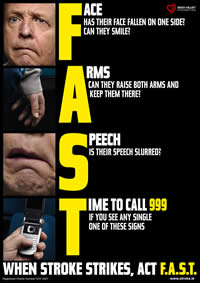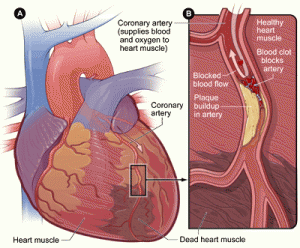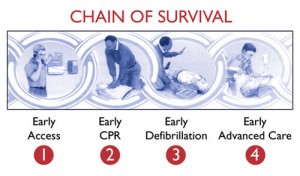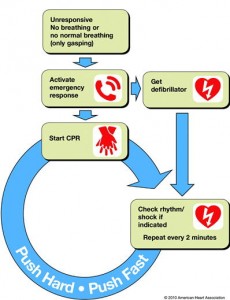Health Information
Be aware of the warning signs for stroke and pass this information on to people you know. Stroke is a medical emergency, if you see any of the warning signs for stroke call 999 immediately. The warning signs or symptoms of stroke are:
- Sudden numbness or weakness of the face, arm or leg on one side of the body.
- Sudden confusion or difficulty speaking and understanding.
- Sudden loss of vision in one or both eyes.
- Sudden trouble walking, a loss of balance and/or dizziness.
- Sudden severe headache with no explanation.
Follow these steps to identify the warning signs for stroke and act F.A.S.T
- Face; Ask the person to smile. Does one side of the face sag?
- Arms; Ask the person to raise both arms. Does one arm drift downwards?
- Speech; Ask the person to repeat a sentence. Is their speech slurred or do they have difficulty understanding you?
- Time-if you observe any of these signs call 999 or get to your nearest hospital.
A TIA (Transient Ischaemic Attack) is a warning stroke or mini stroke that has the same symptoms of stroke but doesn’t cause lasting damage. However TIAs are a warning that you may suffer a full blown stroke in the near future. If you suspect that you or someone close to you has had a TIA consult your doctor immediately. A person who has had one or more TIAs is about 10 times more likely to have a stroke that someone of the same age and sex who has not.
The most common symptom of a heart attack is chest pain. This is usually a crushing or tight pain, which may move to your jaw or your arms particularly on the left side. You may also feel short of breath, sweaty or sick. Some people may feel light–headed or loose consciousness. You may become very anxious or afraid. However 10% – 15% of people have a heart attack may not feel anything. This is more common in older people, especially women and those with diabetes. Sometimes these people may just feel weak, tired, or short of breath. Some elderly patients may simply become confused.
- Chest pain
- Upper body pain in the jaw, back, neck or arms
- Shortness of breath
- Sweating
- Nausea
- Light-headedness
- Loss of consciousness
- Weakness
- Tiredness
Do not wait to get help
At the first signs of a heart attack, call for emergency treatment (999). Do not wait for your symptoms to “go away.” Early recognition and treatment of heart attack symptoms can reduce the risk of heart damage and allow treatment to be started immediately. Even if you’re not sure your symptoms are those of a heart attack, you should still be evaluated.
The best time to treat a heart attack is within one hour of the onset of the first symptoms. When a heart attack occurs, there’s a limited amount of time before significant and long-lasting damage occurs to the heart muscle. If a large area of the heart is injured during the heart attack, full recovery becomes much more difficult.
Call 999 – Not a friend
Action Plan
- Ask your doctor whether you are at risk for a heart attack and what you can do to reduce your risk factors. Be sure to ask about aspirin and nitroglycerin.
- Learn the signs and symptoms of a heart attack.
- Learn what to do if you have symptoms: Call 999 after five minutes – do not call a friend or family member for help.
- Talk with your family members, friends and co-workers about the heart attack warning signs and the importance of acting quickly.
Looking Out for the Elderly in Your Area
Introduce yourself. If you are new to the area, make a point of getting to know the people who live near you. Knock on the door and introduce yourself.
Ask. If your neighbour is elderly, there may be relatively simple tasks that they are no longer able to do on their own. Don’t be shy. Approach them and ask if there’s anything they need help with. Jobs like changing a light bulb, mowing the lawn or some basic DIY may be things that you can help with.
Offer to run errands if you’re going to the shops. When you are next going shopping or into town, mention it to your neighbour and ask if there’s anything they’d like you to get while you’re there.
Provide some company. Notice whether or not your neighbour has any regular visitors. If their family lives far away and they don’t leave the house much, they may appreciate someone popping round once every so often for some company. You might offer to cook them dinner once a week, or simply pop in for a cup of tea.
Read the signs. If you have not seen your neighbour for a while, pay particular attention to some simple signs. Do the lights come on at night? Do the curtains get drawn? Is the garden tended? There may be an accumulation of mail under their door. If you have any reason to suspect that your neighbour might be in need of help, knock on the door to check that they are all right.
Follow up if you are concerned. If you are seriously concerned for your neighbour’s well-being, or suspect that they may not be able to look after themselves, ask them if they are all right. If they are not answering, you may need to contact the Gardai or the Public Health Nurse.
Meningitis and septicaemia can kill in hours – know the symptoms
The first symptoms are usually fever, vomiting, headache and feeling unwell. Red ticks show symptoms more specific to meningitis and septicaemia and less common in milder illnesses. Limb pain, pale skin, and cold hands and feet often appear earlier than the rash, neck stiffness, dislike of bright lights and confusion.
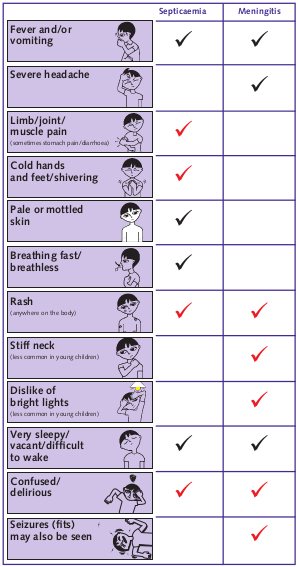
Other signs in babies:
- Tense or bulging soft spot on their head
- Refusing to feed
- Irritable when picked up, with a high pitched or moaning cry
- A stiff body with jerky movements, or else floppy and lifeless
- Fever is often absent in babies less than three months of age
Septicaemia can occur with or without meningitis. Not everyone gets all the symptoms and they can appear in any order.
What should I do if I am worried about someone who is ill?
Trust your instincts. Someone who has meningitis or septicaemia could become seriously ill very quickly. Get medical help immediately if you suspect meningitis or septicaemia – it’s a race against time.
The tumbler test
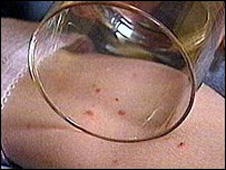 If you are seriously worried about someone who is ill, don’t wait for a rash to appear – get medical help. But if they are already ill and get a new rash or spots, use the Tumbler Test.
If you are seriously worried about someone who is ill, don’t wait for a rash to appear – get medical help. But if they are already ill and get a new rash or spots, use the Tumbler Test.
Press a clear glass tumbler firmly against the rash. If you can see the marks clearly through the glass seek urgent medical help immediately.
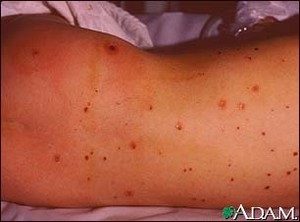 Check the entire body. Look out for tiny red or brown pin-prick marks which can change into larger red or purple blotches and blood blisters.
Check the entire body. Look out for tiny red or brown pin-prick marks which can change into larger red or purple blotches and blood blisters.
The darker the skin the harder it is to see a septicaemic rash so check lighter areas like the palms of hands and soles of feet or look inside the eyelids and the roof of the mouth.
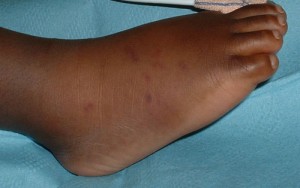 Remember, a very ill person needs medical help even if there are only a few spots, a rash or no rash at all.
Remember, a very ill person needs medical help even if there are only a few spots, a rash or no rash at all.
What are meningitis and septicaemia?
Meningitis is inflammation of the lining around the brain and spinal cord – the meninges. Septicaemia is blood poisoning caused by the same germs and is the more life threatening form of the disease. Septicaemia can occur with or without meningitis.
Follow the link below to the Meningitis Awareness Website.
Occasionally an asthma attack may occur no matter how careful you are about taking your asthma treatment and avoiding triggers. An asthma attack normally doesn’t occur suddenly; most people find that asthma attacks are the result of a gradual worsening of symptoms over a few days. If your symptoms are getting worse, do not ignore them. Quite often using your reliever may be all that is needed to get your asthma under control again. At other times symptoms are more severe and more urgent action is required.
The Five Minute Rule
The Five Minute Rule contains the recommended steps to follow in an asthma attack:
- Ensure the reliever inhaler is taken immediately. This is usually blue and opens up narrowed air passages.
- Sit down and loosen tight clothing.
- Stay calm. Attacks may be frightening and it is important to stay calm.
- If there is no immediate improvement continue to take the reliever inhaler every minute for five minutes or until symptoms improve: two puffs if MDI/evohaler or one puff if turbohaler.
- If symptoms do not improve in five minutes, or if you are in doubt, call 999 or a doctor urgently. Continue to give reliever inhaler until help arrives or symptoms improve.
Do not be afraid of causing a fuss, even at night.
If you are attending the emergency department because of your asthma, take details of your treatment with you. Bring your asthma management plan if you have one to the hospital.
You should also make an appointment with your doctor or nurse after you are discharged from hospital, so that you can review your asthma treatment to avoid the situation rising again.
The Drugs.ie website offers good advice on harm avoidance and minimization around drug use
Make sure you are always supervised at bath time.
Swimming pools should have covers that can be firmly secured.
You cannot tell how deep a hole is if it is water filled.
Consider using a rear-facing car seat until the child is 3 years old. It’s safer!
Never buy a second-hand car seat. You don’t know if it has been involved in a crash.

